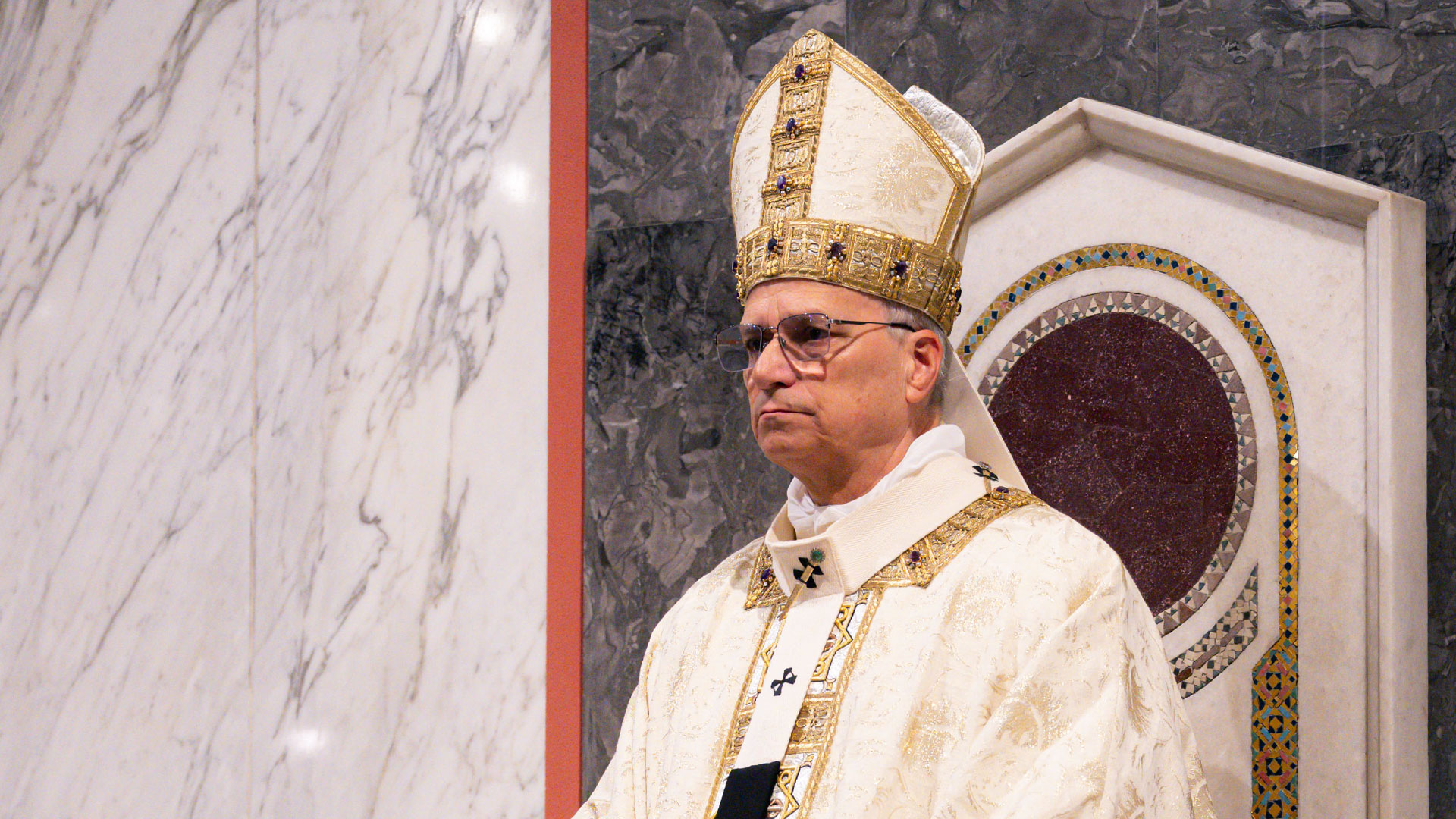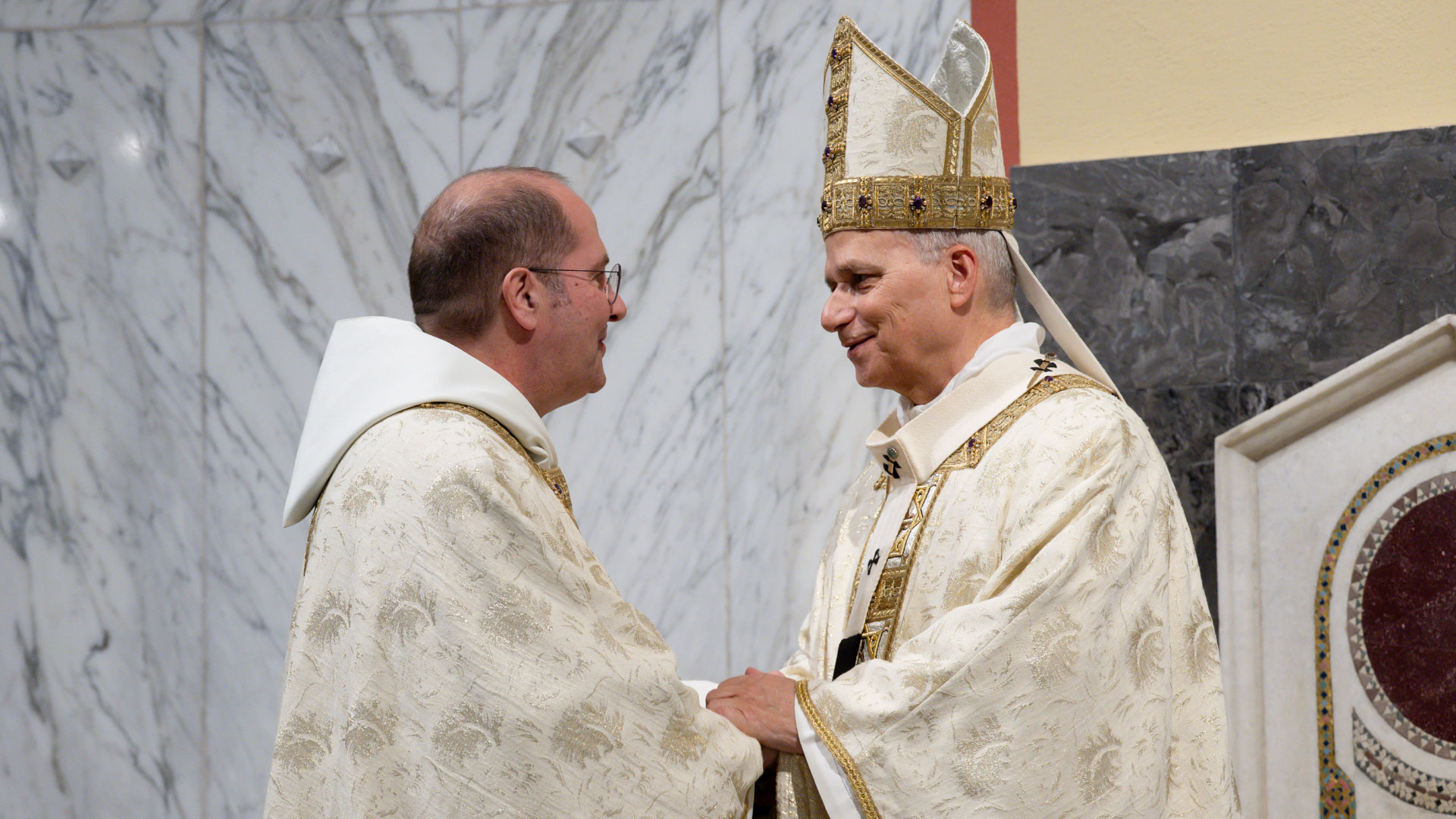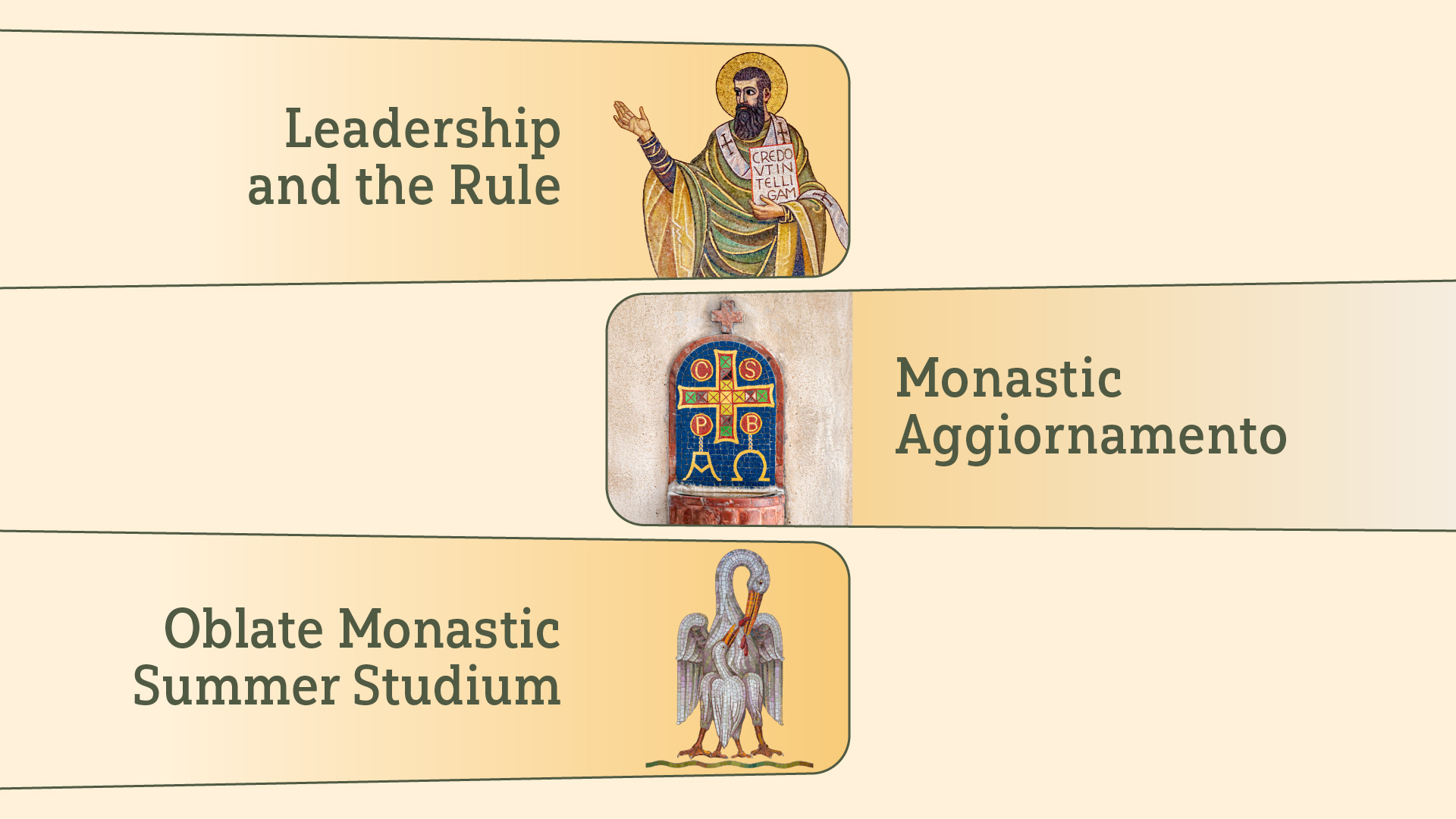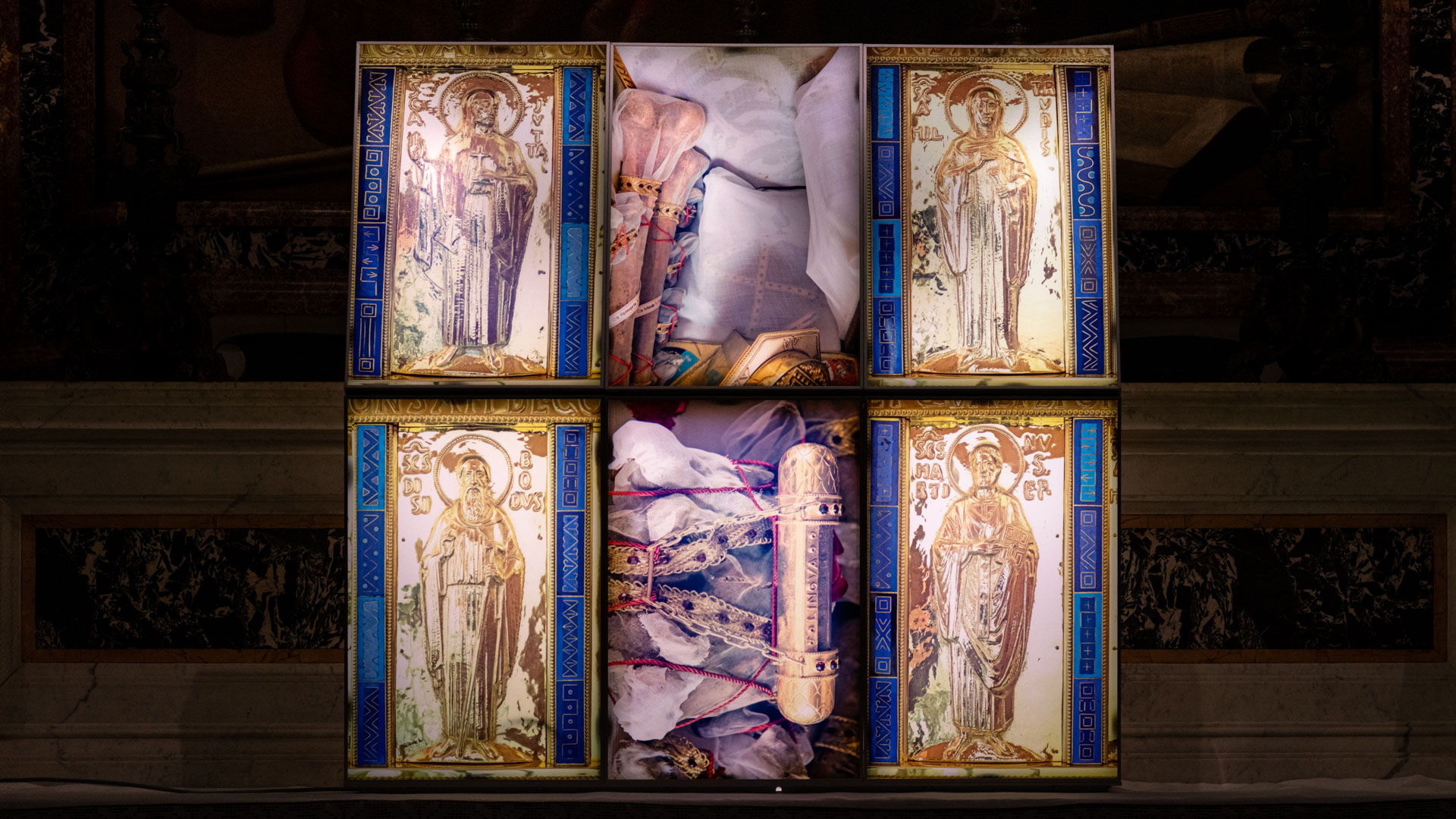Sant’Anselmo Welcomes Theologisches Studienjahr
Due to political instability, the Theological Study Year in Jerusalem has temporarily relocated to Rome, continuing its program of biblical studies, ecumenism, and interreligious dialogue. Leveraging support from Sant’Anselmo, the program has adapted to a new context while exploring Rome’s rich historical ties to the Holy Land.
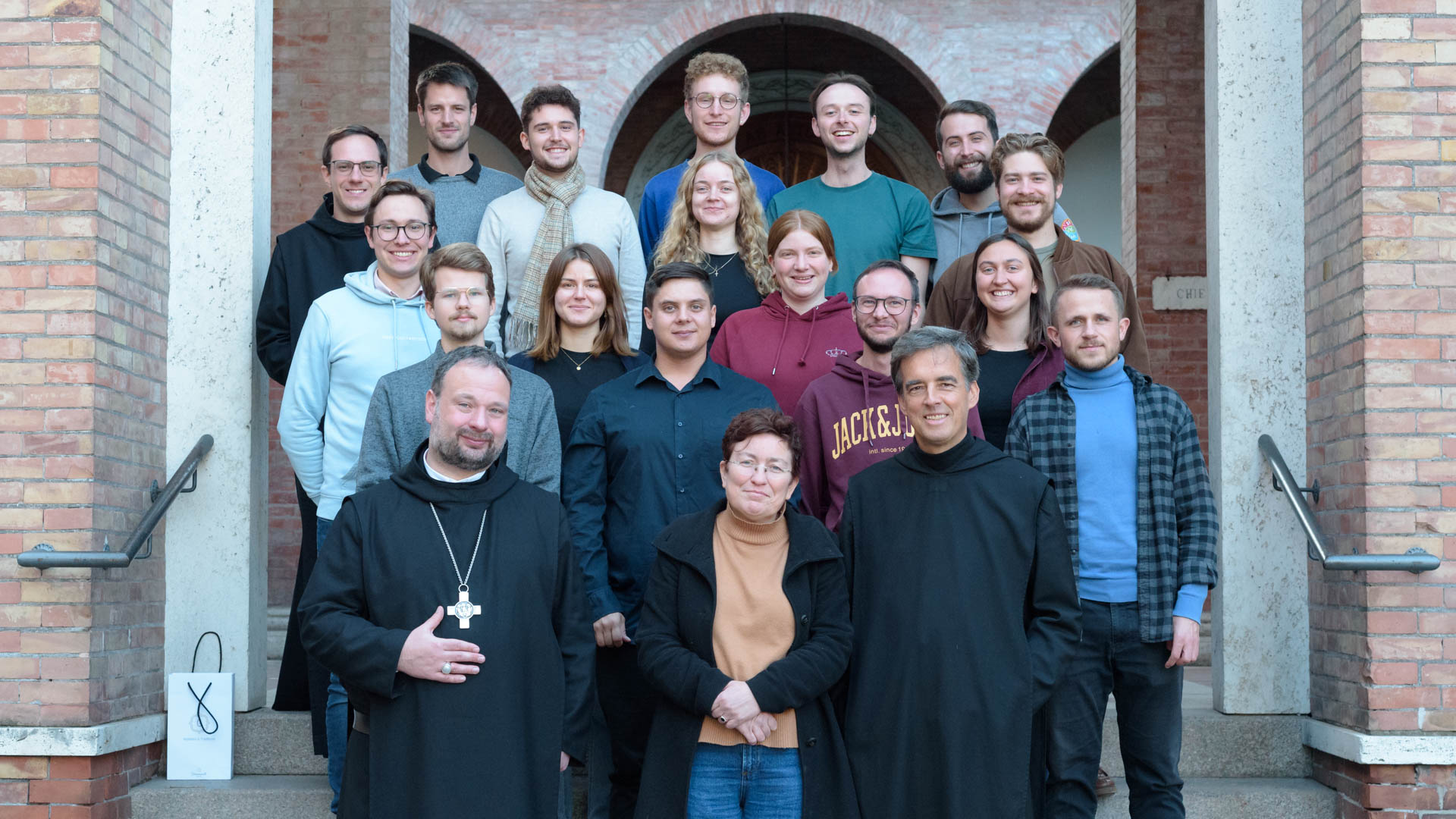
25 November 2024
The Theologisches Studienjahr is a scholarship program financed by the German government and hosted by Dormition Abbey, Jerusalem. The participants are Catholic and Protestant students of theology who will do a deep-dive into biblical studies, archeology and the church history of the Middle East.
By Johanna Erzberger
Director, Theologisches Studienjahr
Less than two months ago, due to the uncertain political situation, the German Academic Exchange Service (Deutscher Akademischer Austauschdienst), which funds scholarships for most of our students, advised the Theological Study Year (Theologisches Studienjahr) in Jerusalem to leave Israel until further notice, following consultations with the German Foreign Office. As a result, we relocated our current cohort from Jerusalem—where the semester had already begun in mid-August—to Rome. Now, our time in both locations is nearly equal. In Jerusalem the home of the Theologische Studienjahr is the Beit Joseph on the compound of Dormition Abbey.
In Rome, as we did four years ago during the Covid-19 pandemic, we are benefiting from the generous hospitality of our parent university, Ateneo Sant’Anselmo, and drawing on many connections established during our previous stay, both within and beyond Sant’Anselmo.
While we hope to return to Jerusalem soon, Rome and Sant’Anselmo have become much more than a temporary refuge. We continue to teach and study biblical studies and archaeology, Christian ecumenism, and interreligious dialogue—much as we did in Jerusalem, but now in a new context.
Running an ecumenical program in Rome comes with its own challenges. However, given that our parent university is just as international as it is “Roman” Catholic, our perspective on ecumenism is also expanding. The interactions between our students and the abbot primate, prior, rector, faculty, and students of Sant’Anselmo have been frequent and inspiring.
While we’ve had to replace our usual excursions, Rome offers its own unique opportunities. Even before the Christian era, Rome and the Levant were deeply connected economically, culturally, and politically, and we are exploring these historical ties. Just as traces of Greek and Roman influence are unmistakable in the Holy Land, Jerusalem’s presence is also felt in Rome—in the depiction of the menorah on the Arch of Titus and in the early history of Christianity.
When we eventually return to Jerusalem, we will carry back something of Rome with us. The bond between the Theological Study Year and Sant’Anselmo has only grown stronger during this time.



